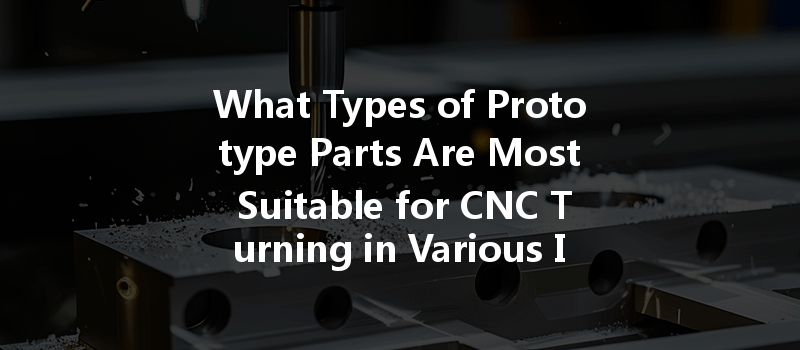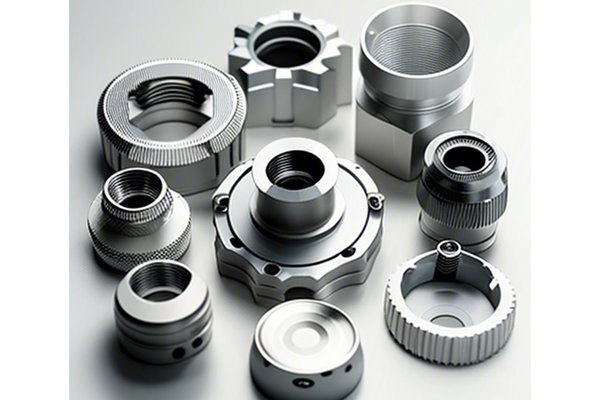Opening: An Engaging Start
Did you know that CNC (Computer Numerical Control) machining has revolutionized manufacturing by reducing production time for custom parts to a fraction of what it used to be? A remarkable statistic highlights that CNC turning can achieve tolerances as tight as ±0.005 mm, making it an ideal choice for various industries, from aerospace to automotive. But not all prototype parts are created equal; some lend themselves better to the CNC turning process than others. In this blog, we will explore the types of prototype parts that are most suitable for CNC turning, the reasons behind their compatibility, and the benefits they bring to various applications.
—
Understanding CNC Turning
CNC turning is a precision machining process used to create cylindrical parts by removing material from a workpiece. The piece is typically rotated against a cutting tool, resulting in a finely tuned shape according to the specifications. This method is advantageous for parts that require uniform symmetry, high precision, and repeatability.
Benefits of CNC Turning
—
Types of Prototype Parts Suitable for CNC Turning
Description: Cylindrical parts are the quintessential type of component produced through CNC turning. These may include shafts, pins, and bushings often used in various machinery.
Why Suitable: The rotational nature of CNC turning makes it inherently well-suited for producing cylindrical shapes. It allows for high levels of symmetry and precision.
Industries: Automotive, aerospace, and robotics commonly use cylindrical prototype parts due to their extensive application in drive shafts, engine components, and automated systems.
Description: Threaded components like screws, bolts, and fittings are critical in creating secure connections in assemblies.
Why Suitable: CNC turning excels in creating intricate threads with significant accuracy and repeatability. The programmable nature of CNC machines ensures that pitch and diameter are maintained across batches.
Industries: Construction, automotive, and consumer goods often require threaded components, making CNC turning a staple in their prototype processes.
Description: Housings and casings, which protect and house internal components, are essential in various products.
Why Suitable: The enclosures often have complex features that can benefit from the precision of CNC turning. They can be manufactured with precise cutouts and threaded holes for mounting.
Industries: Electronics, automotive, and aerospace industries use CNC machining to produce housings for engines, circuit boards, and mechanical assemblies.
Description: Disc and ring components, such as gears and seals, are used in numerous systems to provide motion transfer and containment.
Why Suitable: These shapes can be easily produced by CNC turning, allowing for precise tooth profiles on gears or perfect circular seals.
Industries: Machinery, automotive, and manufacturing sectors often rely on CNC-turned discs and rings for optimal performance.

Description: Valves regulate fluid flow in various systems and are critical in many industrial applications.
Why Suitable: The design of valve components often requires high precision and repeatability, which CNC turning provides through programmed machining paths that maintain uniformity across parts.
Industries: Oil and gas, water treatment, and hydroponics sectors frequently employ CNC-turned valve components to ensure reliable operation.
Description: In the medical field, implants such as orthopedic devices often contain intricate designs tailored to fit the human body.
Why Suitable: CNC turning is capable of meeting strict regulatory and quality standards while allowing for customization in the design of implants.
Industries: The medical industry makes extensive use of CNC turning for producing components that must meet stringent biocompatibility and precision requirements.
—
Detailed Solutions for Optimizing CNC Turning for Prototype Parts
Design Considerations
Process Optimization
Quality Assurance
—
: The Importance of Suitable Prototype Parts for CNC Turning
In conclusion, CNC turning is a pivotal technology in modern manufacturing that allows industries to produce a diverse range of prototype parts with high precision and efficiency. By understanding the types of prototype parts most suitable for CNC turning, and optimizing the various stages of design and production, manufacturers can develop innovative solutions that meet their industry needs.
As the demand for more customized, efficient, and precise parts continues to rise, embracing CNC turning’s capabilities is paramount. It not only accelerates the prototyping process but also enhances the quality and performance of the final products. For businesses looking to stay competitive, reinforcing the importance of selecting the right prototype parts for CNC turning is a worthy endeavor that can lead to significant advancements and developments in their manufacturing processes.
In the fast-evolving landscape of technology and manufacturing, considering how parts are prototyped sets the foundation for future success. So whether you’re developing an innovative product or refining an existing design, remember to leverage the strengths of CNC turning for your prototype parts—it’s a decision that could redefine your approach to manufacturing.






